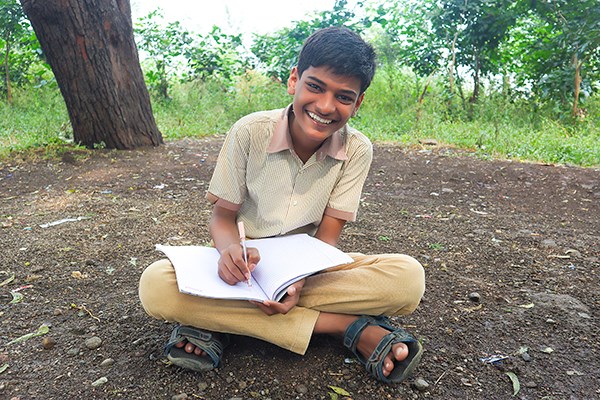Part of a series of articles titled Junior Ranger - Lake Roosevelt National Recreation Area.
Article
Junior Ranger - Story Time

With words? with motions? with signs?
Maybe you can add some music? dance? color?
Is it a funny story? sad? a heroic tale of adventure?
For this activity you will be creating a story, any story you want. But first, lets think about all the ways a story can be told.
Lets start with a funny story about geese!
-
Attack Geese
Daniel Greenfield of Greenfield Berry Farm tells a story about ferocious geese he once owned.
Next, we have a short story about the Trail of Tears and the Cherokee Nation. This is a serious story about a very sad time in history.
And lastly, here is a video in which the storyteller includes many descriptions of what is happening and what they are experiencing. Take a short trip to the beach with Ranger Scott.
Transcript
I’ll be reading you a story about a family visiting one of our beaches found here in the park. So, if you’re ready, I’ll begin.
My Trip to the Beach, written by Ranger Taylor and read by Ranger Scott.
It is a warm summer day, the sun shines bright, and you are with your family visiting Pictured Rocks. You are walking on a sandy path toward the biggest of the Great Lakes - Lake Superior. What do you hear in the distance? Can you hear the waves up ahead?
As you come to the edge of the trees, the wide beach lies before you. It’s called Twelvemile beach, and do you know why? Because this beach stretches for 12 long miles along the shore. You see that Lake Superior is a brilliant aqua blue, and the moving waves have white, watery caps on top of them.
You step onto the beach and take off your shoes. How does the sand feel between your toes?! Perhaps it feels soft and firm all at the same time. Walking through the warm sand, you and your family head to the water’s edge.
You watch the rhythm of the waves washing up onto the sand and flowing back out to the lake. Washing up, flowing back... washing up, flowing back. The sun is really warm on your body now, so it’s time to put your toes in the water. What do you think it will feel like?
It’s quite a change to walk from the warm sand into the cold water, isn’t it? You can see the sunlight sparkling on the rippling surface. Looking down through the clear water of Lake Superior, you can see the tan, sandy bottom below.
What’s that?! Something is alive nearby. You look up into the blue sky. What do you see? There it is! You spot a seagull flying high in the sky.
You are finally feeling cooled off now. So, you walk out of the water and continue down the beach.
You can see the wet, wavy lines in the sand where the last big waves washed up onto the shore. You spot something up ahead that the waves have brought in from the lake. What is that!? You walk closer to investigate.
It’s a piece of a tree that fell into the lake a long time ago and it’s called driftwood. The water has rubbed off the bark and polished it smooth and cool. Wanting our park visitors to see this treasure, you put it back where you found it.
You hear a rumble, but there isn’t a rain cloud in sight! It’s your belly, and that means it is time for a picnic with your family.
Afterwards, maybe you’ll find colorful rocks to make patterns in the sand or gently toss them into the lake. Or, maybe you’ll build giant castles or whole kingdoms in the sand. Whatever your adventure you chose, the beach awaits.
The End.
Thanks for joining me today for Story Time with a Ranger. I hope you come again soon.
- Duration:
- 3 minutes, 26 seconds
Listen to a sensory story about visiting a beach with your family. Find out what you can see, hear, and feel on the Lake Superior shore at Pictured Rocks.
Now it's time to think about creating your own story.
- Decide on a place to describe, an event that happened, or you could even describe a meeting you had with some friends.
- Think about how you can move through the story. What are the steps in the story? Do you arrive somewhere? Meet someone? What did they say? What happened next? Plotting out how the storyline moves is called storyboarding. It is a way to create a picture-by-picture outline of the events you're describing. You can write it down or make audio notes or even work it out with small action figures.
- Decide the medium for telling the story. What does that mean? It means the method and the material. What are you going to use? Is the story going to be a play? Who are you going to cast in your play? Or are you going to create a podcast, which is basically an audio play. You could even make a video of your play or create a mural or a comic book. There are so many ways to tell a story!
- Create your story. Use the emotions, colors, words, songs, dances, textures, feelings, and all the things you've experienced to paint the story.
- Share your story. Find someone to present your story to. It can be anyone. Or, if that sounds a bit scary, you can send it to the rangers at Lake Roosevelt. We would love to see what you create.
Well done, Junior Ranger!
Last updated: April 20, 2022
